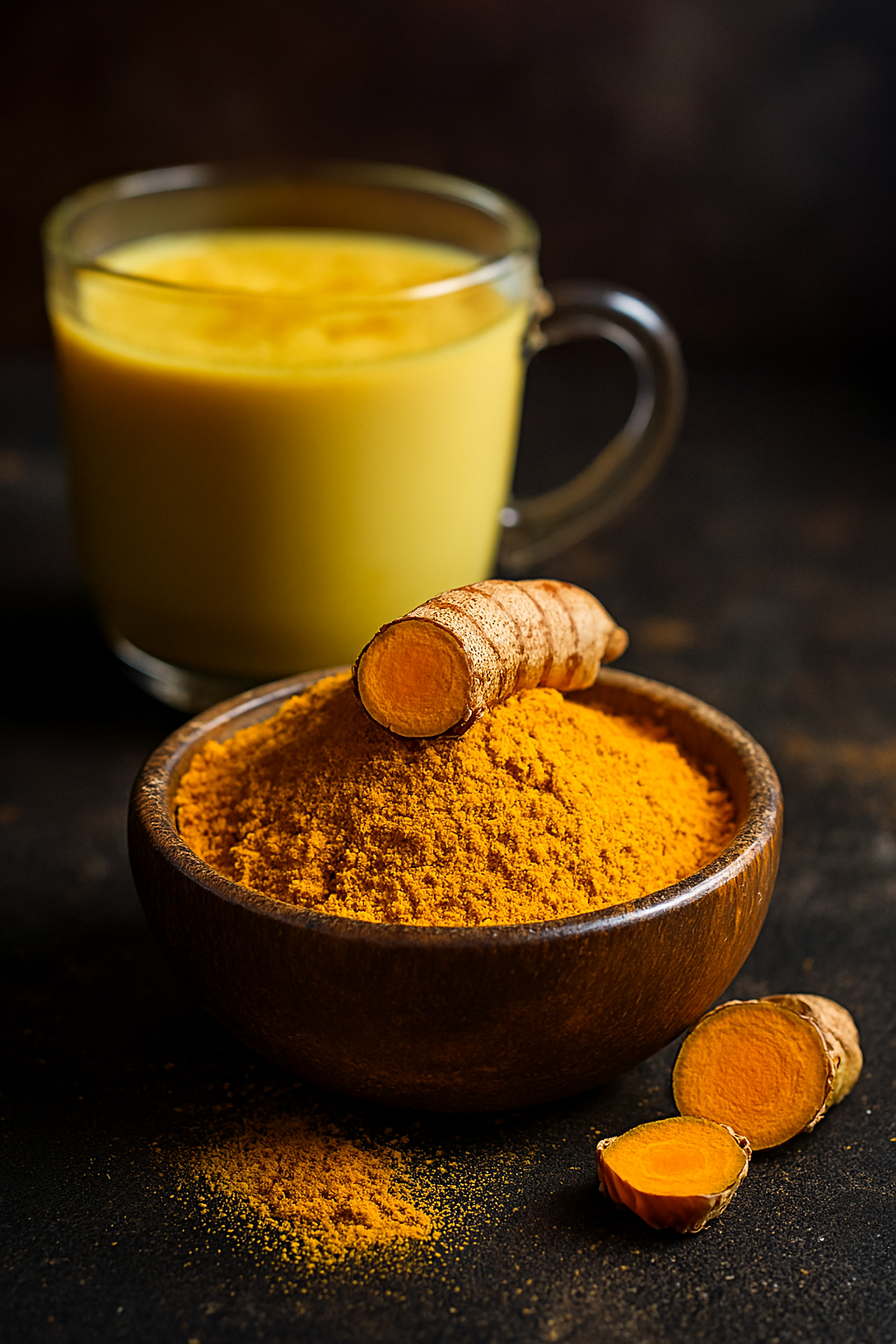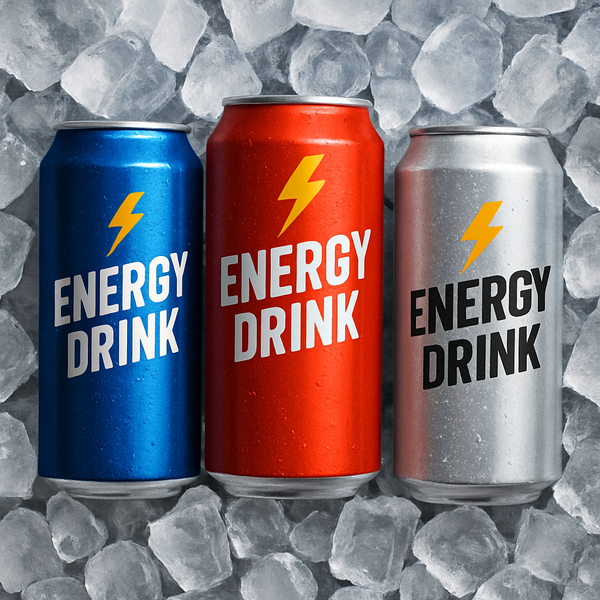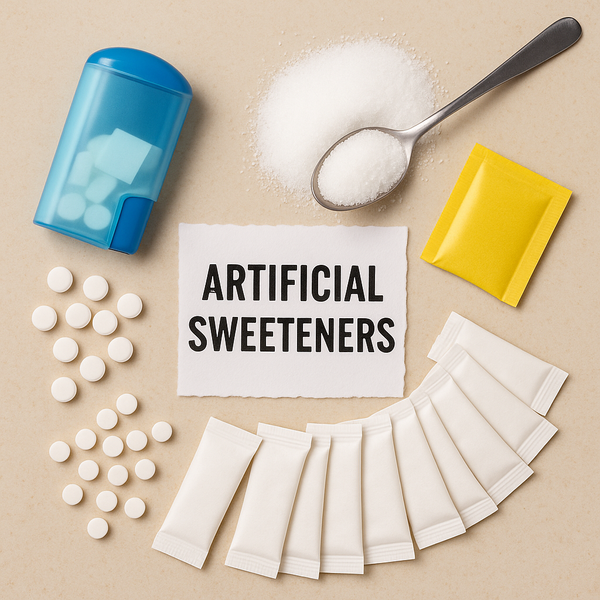Q&A: Can Turmeric’s Bioactive Compound Curcumin Truly Transform Health?
Turmeric is a culturally rich spice with a potent bioactive compound curcumin. Curcumin may support metabolic, cardiovascular and brain health. This article explores turmeric’s culinary roots, bioavailability, safety and curcumin's therapeutic potential.


Take-Home Messages 🔑
|
Domain |
Key Message |
|
Bioavailability & Safety 🧬✅ |
Curcumin has poor natural absorption but is safe even at high doses;
enhanced formulations improve uptake. |
|
Cancer 🎗️🧬 |
Curcumin modulates cancer pathways and supports mucositis relief
during chemo/radiotherapy. |
|
Inflammation & Oxidative Stress🔥🛡️ |
Curcumin lowers inflammatory markers, especially in metabolically
compromised individuals. |
|
Pulmonary Health 🌬️🫁 |
Curcumin reduces airway inflammation and oxidative damage in
respiratory disease models. |
|
Cardiovascular Health ❤️ |
Improves lipid profiles, endothelial function, arterial stiffness and
blood pressure. |
|
Blood Clotting 🩸 |
Shows antiplatelet and anticoagulant effects, potentially supporting
thrombotic risk reduction. |
|
Diabetes & Liver Health 🩺 |
Supports glycaemic control, reduces liver steatosis and improves gut
microbiota in metabolic conditions. |
|
Neurodegeneration 🧠 |
Targets Alzheimer’s pathology via antioxidant, anti-amyloid and
anti-inflammatory mechanisms. |
|
Arthritis 🦵 |
Comparable to non-steroidal anti-inflammatory drugs (NSAIDs) in
symptom relief without gastrointestinal tract side effects. |
|
Gut Health 💩 |
Enhances remission in ulcerative colitis and improves gastrointestinal
symptoms post-bariatric surgery. |
|
Skin Health 🌿🧴 |
Early evidence supports topical and oral curcumin for various skin
conditions. |
|
Weight Status ⚖️ |
May reduce visceral fat and BMI, especially with longer interventions
and enhanced formulations. |
|
Depression & Anxiety 😔 |
Meta-analysis supports curcumin’s efficacy in reducing depressive
symptoms and anxiety. |
|
High-Altitude Adaptation 🗻 |
Improves oxygen capacity and prevents polycythaemia via gut microbiota
modulation. |
Introduction🍛
Turmeric, derived from the rhizome of Curcuma longa, is a vibrant yellow spice belonging to the ginger (Zingiberaceae) family. When extracted, it forms a yellow crystalline powder that is practically insoluble in water but dissolves readily in fats and ethanol—properties that influence its bioavailability in the human body. Turmeric is widely used on its own or blended with other spices to create curry powder, which typically includes ground coriander, cumin, ginger, cinnamon, cloves, cardamom, cayenne pepper (optional for heat), black pepper (optional for heat) and mustard powder (for depth of flavour). Mild curry powders generally contain a higher proportion of turmeric and fewer pungent spices, whereas medium or hot varieties include more chili and black pepper, which may enhance the bioavailability of curcumin through the actions of capsaicin and piperine. Beyond curry, turmeric serves as both a seasoning and a natural colouring agent in foods—and occasionally in textiles.
In South African cuisine, turmeric is a key ingredient in bobotie, a spiced minced meat dish topped with an egg-based custard, where it contributes to both flavour and the characteristic golden hue. Globally, turmeric features in golden milk or turmeric lattes, where it is combined with milk (or plant-based alternatives), black pepper and a fat source such as coconut oil to enhance curcumin absorption. It also appears in mustard sauces, pickles, rice dishes and stews. While turmeric is generally consumed in small culinary amounts, a daily intake of 1 gram or more is considered high and exceeds typical dietary consumption—a distinction between culinary use and therapeutic supplementation.
Approximately 2–6% of turmeric powder consists of curcuminoids, with curcumin [1,7-bis(4-hydroxy-3-methoxy-phenyl)-1,6-heptadiene-3,5-dione] being the predominant compound comprising 3.14% of pure turmeric (1). Curcumin is a polyphenol and widely regarded as the principal bioactive ingredient in turmeric. The concentration of curcumin in turmeric can vary depending on factors such as harvest timing, soil quality and climatic conditions (2, 3).
Turmeric and its principal bioactive compound, curcumin, are associated with a range of health benefits (4). Curcumin exhibits anti-inflammatory, antioxidant, antimicrobial, antimutagenic and anticancer properties following both oral and topical administration (5). Researchers are increasingly interested in curcumin supplementation due to its natural origin, cost-effectiveness and relatively low side-effect profile compared to conventional pharmacological treatments. Here I explore curcumin’s bioavailability, safety profile and it’s therapeutic promise across domains including cancer, inflammation, cardiovascular and metabolic health, neurodegeneration, arthritis, gut and skin health, mood regulation and even high-altitude adaptation.
Bioavailablity and Safety ✅
Although turmeric is widely consumed in culinary contexts, the curcumin it contains—typically just 2–6% of turmeric powder—is poorly absorbed by the human body. Curcumin is lipophilic, unstable at intestinal pH, and undergoes rapid metabolism and excretion, meaning that dietary intake alone yields minimal systemic availability. In essence, curcumin consumed through food tends to pass through the digestive tract with limited absorption and negligible therapeutic effect. To address this challenge, researchers have developed a range of bioavailability-enhancing strategies that improve curcumin’s stability, permeability, and retention in the body. These include advanced delivery systems and co-administration with absorption-boosting compounds, as summarised in the table below.
Table: Strategies to Enhance Curcumin Bioavailability
|
Strategy |
Mechanism of Action |
Reference |
|
Nanoparticles |
Encapsulates curcumin in ultra-small particles to improve membrane
permeability and cellular uptake. |
(6) |
|
Liposomal Delivery Systems |
Encloses curcumin in fat-based liposomes to protect it from
degradation and enhance transport. |
(7) |
|
Lipidated Nanoparticle Formulations |
Combines curcumin with lipids in nanoparticle form to boost stability
and absorption. |
— |
|
Curcumin-Phospholipid Complexes |
Bonds curcumin with phospholipids to improve integration into
biological membranes. |
(8) |
|
Co-administration with Adjuvants |
— |
|
|
Piperine (black pepper) |
Inhibits liver metabolism of curcumin, significantly increasing its
bioavailability. |
(9) |
|
Soluble fiber (fenugreek) |
Stabilises curcumin and supports sustained release and absorption. |
(10) |
Puthusserickal Hassan pointed to the good tolerability and safety of curcuminoids in human clinical trails even at doses up to 12 g/day (5). While turmeric and curcumin are generally considered safe, some studies have reported mild adverse effects such as diarrhoea, headache, rash, yellow stools, and nausea—symptoms that warrant discontinuation of use if experienced (4). Across clinical research, curcumin has shown therapeutic efficacy within a dosage range of 50 mg to 5 g/day, with benefits observed at doses as low as 150 mg/day (11).
Turmeric/Curcumin Supplementation and Health 💊
Turmeric and Cancer🧬 🎗️
Turmeric’s anticarcinogenic potential is linked to its ability to modulate cellular communication—both internally and with the external environment—key processes in cancer initiation and progression. Curcumin modulates numerous molecular targets—transcription factors, cytokines, kinases and growth factors—which can be both a strength and a limitation (12). While curcumin’s pleiotropic nature allows it to act on multiple cancer-related pathways, this lack of specificity may complicate its mechanistic clarity (12).
A systematic review curcumin inhibited cancer cell growth (proliferation) and promoted programmed cell death (apoptosis) in head and neck squamous cell carcinoma, showing promise as a supportive treatment alongside conventional therapies (13). In terms of treating oral mucositis in cancer patients undergoing chemo and/or radiotherapy, scientists has shown that turmeric/curcumin applied topically as a gel or as a mouthwash reduced the grade of mucositis, pain, erythema intensity and ulcerative area and, therefore, it could be recommended to those with mucositis (14).
Oxidative and Inflammation🔥🛡️
Curcumin neutralises reactive oxygen species (ROS), reducing oxidative stress. The following table summarises the anti-inflammatory effects of curcuminoid supplementation, specifically in relation to the inflammatory biomarkers C-reactive protein (CRP), interleukin-6 (IL-6), and tumour necrosis factor-alpha (TNF-α).
Table: Summary of Systematic Reviews and Meta-Analyses on Curcuminoids and Inflammation
|
Study |
Design |
Outcome |
Key Notes |
|
Sahebkar (15) |
Systematic review & meta-analysis |
↓ CRP |
Effect dependent on bioavailability and duration
of supplementation. |
|
Panahi, Hosseini (16) |
Clinical trial + meta-analysis |
↓ CRP and improved oxidative status |
Used curcuminoid–piperine complex in patients
with metabolic syndrome. |
|
Derosa, Maffioli (17) |
Systematic review & meta-analysis |
↓ IL-6 |
Stronger effect in individuals with higher
systemic inflammation. |
|
Sahebkar, Cicero (18) |
Systematic review & meta-analysis |
↓ TNF-α |
Demonstrated curcumin’s TNF-α lowering potential. |
|
Tabrizi, Vakili (19) |
Systematic review of 15 RCTs |
↓ IL-6 and CRP; no effect on TNF-α |
Synthesized current evidence across high-quality
trials. |
CRP, C-reactive protein; IL-6, interleukin-6; RCT, randomised controlled trial; TNF-α, tumor necrosis factor-alpha
Pulmonary Diseases🌬️🫁
Curcumin’s anti-inflammatory, antioxidant, anti-fibrotic and immune-modulating properties make it a candidate for adjunct treatment in respiratory conditions. A systematic review reported that curcumin may reduce alveolar epithelial thickening, airway remodelling and emphysema progression. It also alleviates inflammation and oxidative stress in both in vitro and in vivo models (20).
Cardiovascular health❤️
Improved Blood Lipids
To assess the efficacy of turmeric/curcumin in lowering blood lipids in patients at risk for cardiovascular disease seven studies were summarised. The research indicated reduced LDL-cholesterol (bad cholesterol) and total cholesterol in the turmeric/curcumin groups compared to control groups, but found that HDL-cholesterol (good cholesterol) were not improved (21). Likewise, evidence from 12-14 randomised control trials showed that turmeric and curcuminoids could lower blood triglycerides, total cholesterol and LDL-cholesterol, and increase HDL cholesterol in adults with metabolic diseases (22).
Endothelial Function, Arterial Stiffness & Haemodynamics
In the following table, I summarise key vascular outcomes associated with turmeric/curcumin supplementation, detailing the physiological variables researchers measured and their relevance to cardiovascular health.
🟡 Table: Vascular Benefits of Turmeric/Curcumin
|
Health Outcome |
Variable Measured |
Definition |
Reference |
|
Improved Endothelial Function |
Flow-mediated
dilation (FMD) |
% change in
artery diameter in response to increased blood flow; reflects endothelial
health. |
(11, 23) |
|
Forearm blood
flow response to acetylcholine (FBFAch) |
Measures
vasodilation in response to acetylcholine; indicates endothelial nitric oxide
activity. |
(23) |
|
|
Reflective
index |
Ratio derived
from pulse wave analysis; indicates vascular tone and compliance. |
(24) |
|
|
Reduced Arterial Stiffness |
Carotid-femoral
pulse wave velocity (cfPWV) |
Speed of
pressure wave between carotid and femoral arteries; higher values indicate
stiffer arteries. |
(25) |
|
Brachial-ankle
pulse wave velocity (baPWV) |
Measures
arterial stiffness from arm to ankle; reflects systemic vascular health. |
(26) |
|
|
β-stiffness
index |
A
dimensionless index quantifying arterial stiffness independent of blood
pressure. |
(27) |
|
|
Improved Vascular Haemodynamics |
Brachial
pulse pressure (bPP) |
Difference
between systolic and diastolic pressure in the brachial artery; elevated
values suggest increased arterial stiffness. |
(25) |
|
Aortic and
brachial systolic blood pressure (aSBP and bSBP) |
Peak pressure
in the aorta and brachial artery during heart contraction; elevated levels
are linked to cardiovascular risk. |
(28) |
Blood Clotting
Curcumin shows promising antiplatelet, anticoagulant and cardiovascular protective effects, making it a potential complementary therapy for thrombotic heart disease by supporting haemostasis and reducing clot-related risks (29).
Diabetes and Liver Health🩺
Research on curcumin’s hepatoprotective effects is ongoing, with further studies needed to clarify its molecular mechanisms in oxidative liver disease (30). Evidence from prediabetes and type 2 diabetes populations supports curcumin supplementation for improving glycaemic control and lipid profiles (31), although a 16-week trial in patients with diabetic peripheral neuropathy found no significant clinical benefit despite good tolerability (32). In contrast, a 12-month randomised control trial showed that 1500 mg/day of curcumin improved glycaemic control, reduced inflammation and oxidative stress, and alleviated liver steatosis and stiffness in patients with type 2 diabetes and Metabolic dysfunction-Associated Steatotic Liver Disease (33). Additionally, a 12-week trial in older adults with prediabetes reported reduced glycated haemoglobin A1c (HbA1c) and modest improvements in gut microbiota following 80 mg/day curcumin supplementation (34).
Neurodegenerative Diseases🧠
Curcumin inhibits β-amyloid aggregation and promotes its clearance, potentially slowing plaque formation (35). Curcumin shows promise in treating Alzheimer’s disease by targeting multiple pathological mechanisms—including amyloid-β plaque disaggregation, tau clearance, antioxidant activity and modulation of microglial and insulin signalling (36).
Arthritis🦵
A summary of scientific evidence concluded that turmeric extracts (typically 1 g/day of curcumin) treatment over 8-12 weeks can reduce pain and inflammation-related symptoms and result in similar improvements in the symptoms as ibuprofen and diclofenac sodium without the gastrointestinal symptoms associated with the conventional drugs in those with arthritis especially osteoarthritis (37).
Gut health💩
A small systematic review and meta-analysis that included three randomised control studies (38), showed higher clinical remission rates when curcumin was used in combination with mesalamine, the medication used to treat inflammatory bowel disease, to achieve remission in patients with ulcerative colitis (38).
Skin health🧴
Vaughn, Branum (39) summarised the evidence for the use of both topical and ingested turmeric/curcumin to modulate skin health and function including acne, alopecia, atopic dermatitis, facial photoaging, oral lichen planus, pruritus, psoriasis, radiodermatitis and vitiligo. There is early evidence that turmeric/curcumin products and supplements, both oral and topical, may provide therapeutic benefits for skin health, but that further research is needed to say for certain (39).
Weight status⚖️
A systematic review of three studies to determine the effect of curcumin on body weight, body mass index (BMI), fat mass, and waist circumference found that curcumin in more bioavailable and soluble forms can lower some of these anthropometric markers (total body fat and visceral fat)(40). The authors cautioned that further research is needed to confirm curcumin’s effects on body measurements, but noted that longer-duration interventions—regardless of the form of curcumin used—appear more effective than shorter ones (40). Curcumin supplementation also improved gastrointestinal symptoms and reduced BMI and neck circumference in women with severe obesity undergoing bariatric surgery, suggesting its potential as a supportive dietary intervention (41). Currently the scientific community is uncertain whether this is, because of random variance or a true effect.
Depression😔
Researchers summarised 6 trials with a total of 377 patients to evaluate the effects of curcumin in treating depression when compared to a placebo. The meta-analysis supports the clinical efficacy of curcumin in ameliorating depressive symptoms and also reported anti-anxiety effects observed in 3 of the studies (42).
High-altitude Acclimatisation🗻
Curcumin supplementation supports high-altitude acclimatisation in the male Han population by enhancing oxygen-carrying capacity at low altitude and preventing polycythaemia at high altitude through modulation of gut microbiota (43).
Conclusion
One of the red flags of quackery, is when a product label claims that the content can treat a diverse array of conditions i.e. when it claims to be a panacea. Even though health claims cannot yet be made in the case of turmeric/curcumin, scientific evidence do allude to it being beneficial in a number of conditions, because of its chemical properties. Given that the risk is low for consuming/supplementing with turmeric/curcumin, but that there are some benefits one could argue that the benefits outweigh the risk and increase consumption thereof until enough research has accrued to reap potential benefits in the meantime.
Reflections🧘💡
· Have you ever considered how everyday spices such as turmeric might support your long-term health? Reflect on your current dietary habits and whether they include anti-inflammatory foods. What role could turmeric play in your wellness routine?
· In what ways can you incorporate turmeric into familiar meals or traditional dishes? Think about recipes you already enjoy—could turmeric be added to soups, stews or rice? How might this enhance both flavour and function?
· What are your thoughts on using supplements versus obtaining nutrients through food? Consider the potential benefits and limitations of curcumin supplements. Would you prefer a therapeutic dose via capsules, or a consistent intake through golden milk and curries?
Love what you’re reading? Share the knowledge! 📨 Forward this link to a friend who might also enjoy it.
References 📚
1. Tayyem RF, Heath DD, Al-Delaimy WK, Rock CL. Curcumin content of turmeric and curry powders. Nutrition and cancer. 2006;55(2):126-31.
2. Choudhury B, Nath A, Hazarika S, Ansari M, Buragohain J, Mishra D. Effects of pre-harvest soil management practices and post-harvest processing on phytochemical qualities of turmeric (Curcuma longa). Indian J Agric Sci. 2017;87:1002-7.
3. Yin M, Bohuon P, Avallone S, In S, Weil M. Postharvest treatments of turmeric (Curcuma longa L.) in Cambodia-impact on quality. 2022.
4. Hewlings SJ, Kalman DS. Curcumin: A Review of Its Effects on Human Health. Foods. 2017;6(10):92.
5. Hassan F-u, Rehman MS-u, Khan MS, Ali MA, Javed A, Nawaz A, et al. Curcumin as an alternative epigenetic modulator: mechanism of action and potential effects. Frontiers in genetics. 2019;10:514.
6. Wong KE, Ngai SC, Chan KG, Lee LH, Goh BH, Chuah LH. Curcumin Nanoformulations for Colorectal Cancer: A Review. Front Pharmacol. 2019;10:152.
7. Wei XQ, Ba K. Construction a Long-Circulating Delivery System of Liposomal Curcumin by Coating Albumin. ACS Omega. 2020;5(27):16502-9.
8. Marczylo TH, Verschoyle RD, Cooke DN, Morazzoni P, Steward WP, Gescher AJ. Comparison of systemic availability of curcumin with that of curcumin formulated with phosphatidylcholine. Cancer chemotherapy and pharmacology. 2007;60(2):171-7.
9. Shoba G, Joy D, Joseph T, Majeed M, Rajendran R, Srinivas PS. Influence of piperine on the pharmacokinetics of curcumin in animals and human volunteers. Planta Med. 1998;64(4):353-6.
10. Krishnakumar I, Ravi A, Kumar D, Kuttan R, Maliakel B. An enhanced bioavailable formulation of curcumin using fenugreek-derived soluble dietary fibre. Journal of Functional Foods. 2012;4(1):348-57.
11. Akazawa N, Choi Y, Miyaki A, Tanabe Y, Sugawara J, Ajisaka R, et al. Curcumin ingestion and exercise training improve vascular endothelial function in postmenopausal women. Nutrition Research. 2012;32(10):795-9.
12. Shanmugam MK, Rane G, Kanchi MM, Arfuso F, Chinnathambi A, Zayed ME, et al. The Multifaceted Role of Curcumin in Cancer Prevention and Treatment. Molecules. 2015;20(2):2728-69.
13. Borges GÁ, Rêgo DF, Assad DX, Coletta RD, De Luca Canto G, Guerra ENS. In vivo and in vitro effects of curcumin on head and neck carcinoma: a systematic review. Journal of Oral Pathology & Medicine. 2017;46(1):3-20.
14. Normando AGC, de Menêses AG, de Toledo IP, Borges GÁ, de Lima CL, dos Reis PED, et al. Effects of turmeric and curcumin on oral mucositis: A systematic review. Phytotherapy Research. 2019;33(5):1318-29.
15. Sahebkar A. Are curcuminoids effective C‐reactive protein‐lowering agents in clinical practice? Evidence from a meta‐analysis. Phytotherapy research. 2014;28(5):633-42.
16. Panahi Y, Hosseini MS, Khalili N, Naimi E, Majeed M, Sahebkar A. Antioxidant and anti-inflammatory effects of curcuminoid-piperine combination in subjects with metabolic syndrome: a randomized controlled trial and an updated meta-analysis. Clinical nutrition. 2015;34(6):1101-8.
17. Derosa G, Maffioli P, Simental-Mendía LE, Bo S, Sahebkar A. Effect of curcumin on circulating interleukin-6 concentrations: A systematic review and meta-analysis of randomized controlled trials. Pharmacological Research. 2016;111:394-404.
18. Sahebkar A, Cicero AF, Simental-Mendía LE, Aggarwal BB, Gupta SC. Curcumin downregulates human tumor necrosis factor-α levels: A systematic review and meta-analysis ofrandomized controlled trials. Pharmacological research. 2016;107:234-42.
19. Tabrizi R, Vakili S, Akbari M, Mirhosseini N, Lankarani KB, Rahimi M, et al. The effects of curcumin‐containing supplements on biomarkers of inflammation and oxidative stress: A systematic review and meta‐analysis of randomized controlled trials. Phytotherapy Research. 2019;33(2):253-62.
20. Safari S, Davoodi P, Soltani A, Fadavipour M, Rezaeian A, Heydari F, et al. Curcumin effects on chronic obstructive pulmonary disease: A systematic review. Health Science Reports. 2023;6(3):e1145.
21. Qin S, Huang L, Gong J, Shen S, Huang J, Ren H, et al. Efficacy and safety of turmeric and curcumin in lowering blood lipid levels in patients with cardiovascular risk factors: a meta-analysis of randomized controlled trials. Nutr J. 2017;16(1):68.
22. Yuan F, Dong H, Gong J, Wang D, Hu M, Huang W, et al. A systematic review and meta-analysis of randomized controlled trials on the effects of turmeric and curcuminoids on blood lipids in adults with metabolic diseases. Advances in Nutrition. 2019;10(5):791-802.
23. Santos-Parker JR, Strahler TR, Bassett CJ, Bispham NZ, Chonchol MB, Seals DR. Curcumin supplementation improves vascular endothelial function in healthy middle-aged and older adults by increasing nitric oxide bioavailability and reducing oxidative stress. Aging (albany NY). 2017;9(1):187.
24. Usharani P, Mateen A, Naidu M, Raju Y, Chandra N. Effect of NCB-02, atorvastatin and placebo on endothelial function, oxidative stress and inflammatory markers in patients with type 2 diabetes mellitus: a randomized, parallel-group, placebo-controlled, 8-week study. Drugs in R & D. 2008;9(4):243-50.
25. Campbell MS, Berrones AJ, Krishnakumar I, Charnigo RJ, Westgate PM, Fleenor BS. Responsiveness to curcumin intervention is associated with reduced aortic stiffness in young, obese men with higher initial stiffness. Journal of Functional Foods. 2017;29:154-60.
26. Chuengsamarn S, Rattanamongkolgul S, Phonrat B, Tungtrongchitr R, Jirawatnotai S. Reduction of atherogenic risk in patients with type 2 diabetes by curcuminoid extract: a randomized controlled trial. The Journal of nutritional biochemistry. 2014;25(2):144-50.
27. Akazawa N, Choi Y, Miyaki A, Tanabe Y, Sugawara J, Ajisaka R, et al. Effects of curcumin intake and aerobic exercise training on arterial compliance in postmenopausal women. Artery research. 2013;7(1):67-72.
28. Sugawara J, Akazawa N, Miyaki A, Choi Y, Tanabe Y, Imai T, et al. Effect of endurance exercise training and curcumin intake on central arterial hemodynamics in postmenopausal women: pilot study. American journal of hypertension. 2012;25(6):651-6.
29. Keihanian F, Saeidinia A, Bagheri RK, Johnston TP, Sahebkar A. Curcumin, hemostasis, thrombosis, and coagulation. Journal of Cellular Physiology. 2018;233(6):4497-511.
30. Farzaei MH, Zobeiri M, Parvizi F, El-Senduny FF, Marmouzi I, Coy-Barrera E, et al. Curcumin in Liver Diseases: A Systematic Review of the Cellular Mechanisms of Oxidative Stress and Clinical Perspective. Nutrients. 2018;10(7):855.
31. Poolsup N, Suksomboon N, Kurnianta PDM, Deawjaroen K. Effects of curcumin on glycemic control and lipid profile in prediabetes and type 2 diabetes mellitus: a systematic review and meta-analysis. PloS one. 2019;14(4):e0215840.
32. Mansour A, Rahimi HR, Gerami H, Khorasanian AS, Esmaeili AH, Amrollahi Bioky A, et al. The effectiveness and safety of nanocurcumin supplementation for diabetic peripheral neuropathy in patients with type 2 diabetes: a randomized double-blind clinical trial. Nutr J. 2025;24(1):115.
33. Yaikwawong M, Jansarikit L, Jirawatnotai S, Chuengsamarn S. Curcumin for Inflammation Control in Individuals with Type 2 Diabetes Mellitus and Metabolic Dysfunction-Associated Steatotic Liver Disease: A Randomized Controlled Trial. Nutrients. 2025;17(12).
34. Lamichhane G, Godsey TJ, Liu J, Franks R, Zhang G, Emerson SR, et al. Twelve-Week Curcumin Supplementation Improves Glucose Homeostasis and Gut Health in Prediabetic Older Adults: A Pilot, Double-Blind, Placebo-Controlled Trial. Nutrients. 2025;17(13):2164.
35. Goozee K, Shah T, Sohrabi HR, Rainey-Smith S, Brown B, Verdile G, et al. Examining the potential clinical value of curcumin in the prevention and diagnosis of Alzheimer’s disease. British Journal of Nutrition. 2016;115(3):449-65.
36. Tang M, Taghibiglou C. The Mechanisms of Action of Curcumin in Alzheimer’s Disease. Journal of Alzheimer’s Disease. 2017;58(4):1003-16.
37. Daily JW, Yang M, Park S. Efficacy of Turmeric Extracts and Curcumin for Alleviating the Symptoms of Joint Arthritis: A Systematic Review and Meta-Analysis of Randomized Clinical Trials. J Med Food. 2016;19(8):717-29.
38. Iqbal U, Anwar H, Quadri AA. Use of Curcumin in Achieving Clinical and Endoscopic Remission in Ulcerative Colitis: A Systematic Review and Meta-analysis. The American Journal of the Medical Sciences. 2018;356(4):350-6.
39. Vaughn AR, Branum A, Sivamani RK. Effects of Turmeric (Curcuma longa) on Skin Health: A Systematic Review of the Clinical Evidence. Phytotherapy Research. 2016;30(8):1243-64.
40. Hariri M, Haghighatdoost F. Effect of Curcumin on Anthropometric Measures: A Systematic Review on Randomized Clinical Trials. Journal of the American College of Nutrition. 2018;37(3):215-22.
41. Kattah FM, Figueiredo N, Bezerra KK, Oliveira ES, Melo CC, Lima GB, et al. Curcumin Supplementation Improves Gastrointestinal Symptoms in Women with Severe Obesity: A Double-Blind, Randomized, Placebo-Controlled Trial-A Pilot Study. Nutrients. 2025;17(13).
42. Ng QX, Koh SSH, Chan HW, Ho CYX. Clinical Use of Curcumin in Depression: A Meta-Analysis. Journal of the American Medical Directors Association. 2017;18(6):503-8.
43. Hu J, Lang H, Fan D, Wen T, Shi J, Xiao C, et al. Curcumin supplementation accelerates high-altitude acclimatization, prevents polycythemia and modulates gut microbiota in male Han population: a randomized controlled trial. Frontiers in Nutrition. 2025;12:1572376.
In developing this work, the author utilised Copilot to assist with language editing.




